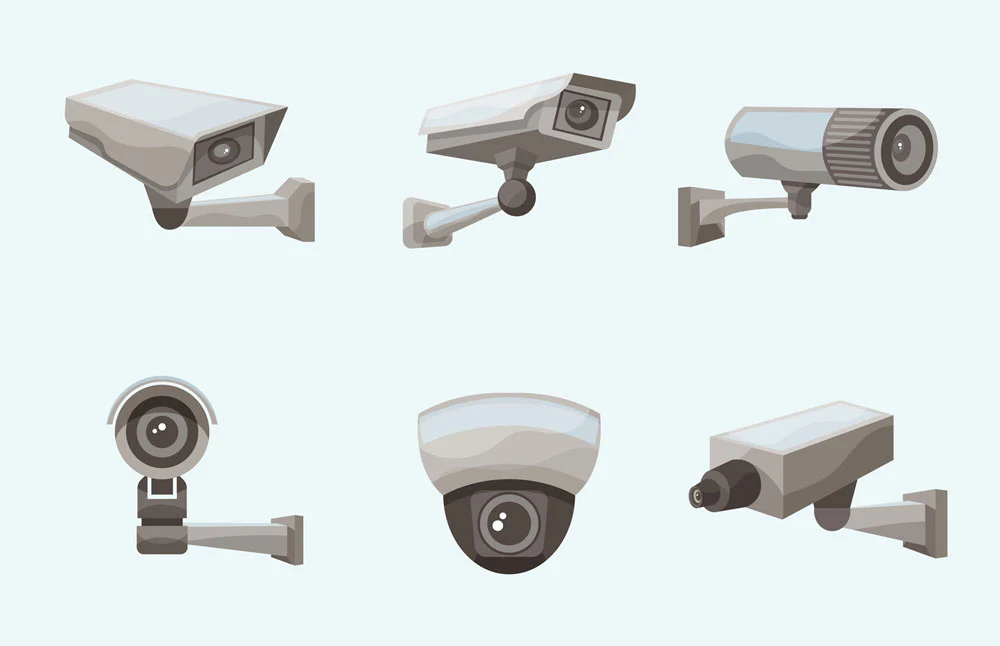The evolution of CCTV cameras from analog to digital surveillance marks a significant advancement in the field of security and monitoring. These technological strides have not only improved the quality and functionality of surveillance systems but also enhanced their role in crime prevention and public safety. This article delves into the journey of CCTV cameras, highlighting key developments and their impact on modern surveillance practices.

The Dawn of Analog CCTV Cameras
In the early days, CCTV cameras were purely analog, capturing images through a series of connected devices that included cameras, monitors, and recording equipment. Introduced in the mid-20th century, these systems were primarily used for security in high-risk areas such as banks and government buildings.
Limitations of Analog Systems
- Image Quality: The resolution of analog cameras was relatively low, producing grainy images that were often insufficient for detailed analysis.
- Storage: Analog systems used videotapes for recording, which required significant physical storage space and had limited recording time.
- Maintenance: The mechanical nature of these systems meant frequent maintenance and higher susceptibility to wear and tear.
Transition to Digital CCTV Cameras
The transition from analog to digital CCTV cameras began in the late 20th century, driven by advancements in digital technology. This shift brought about significant improvements in the functionality and efficiency of surveillance systems.
Advantages of Digital Surveillance
- Enhanced Image Quality: Digital cameras offered higher resolution images, providing clearer and more detailed footage. This improvement has been crucial for identifying suspects and monitoring activities with greater precision.
- Efficient Storage: Digital recording systems use hard drives and cloud storage, allowing for longer recording times and easier access to archived footage. This shift eliminated the cumbersome need for physical storage.
- Ease of Integration: Digital systems can be integrated with other technologies such as motion detection, facial recognition, and remote monitoring. This integration has expanded the capabilities and applications of CCTV systems.
The Rise of IP Cameras and Networked Surveillance
The development of Internet Protocol (IP) cameras marked a significant milestone in the evolution of CCTV cameras. IP cameras transmit video data over a network, allowing for greater flexibility and scalability in surveillance systems. Read More About The Role of CCTV Cameras in Crime Prevention and Public Safety.
Benefits of IP Cameras
- Remote Access: Users can access live feeds and recorded footage from anywhere via the internet, enhancing the ability to monitor multiple locations simultaneously.
- Advanced Features: IP cameras often come equipped with features such as high-definition video, night vision, and smart analytics, which enable more proactive surveillance.
- Scalability: Networked systems can easily be expanded by adding more cameras without the need for extensive rewiring, making them suitable for both small-scale and large-scale surveillance operations.
Digital Surveillance and Artificial Intelligence
The integration of artificial intelligence (AI) with digital surveillance systems has revolutionized the way CCTV cameras are used. AI technologies enhance the capabilities of surveillance systems in several ways:
- Automated Monitoring: AI-powered cameras can automatically detect and alert users to unusual activities, reducing the need for constant human supervision.
- Facial Recognition: Advanced facial recognition software can identify individuals, providing a powerful tool for security and law enforcement agencies.
- Predictive Analytics: AI can analyze patterns in surveillance data to predict potential security threats, allowing for preventive measures to be taken.
Impact on Public Safety and Crime Prevention
The evolution of CCTV cameras from analog to digital surveillance has had a profound impact on public safety and crime prevention. Modern surveillance systems offer:
- Improved Crime Deterrence: The presence of high-tech cameras acts as a stronger deterrent to criminal activities.
- Enhanced Investigation Capabilities: High-resolution footage and advanced analytics aid in the swift resolution of crimes.
- Greater Public Confidence: Improved surveillance technology fosters a sense of security among the public, encouraging greater community engagement and cooperation.
Conclusion
The journey of CCTV cameras from analog to digital surveillance represents a remarkable advancement in security technology. These innovations have not only improved the quality and efficiency of surveillance but also expanded the scope of their applications. As digital technology continues to evolve, CCTV cameras will likely become even more integral to public safety and crime prevention efforts.